How do you match your students’ excitement after winter break with the classroom activities planned for their return? I always loved seeing the students’ bright-eyed, ready to learn faces waiting at the classroom doorstep. It was a fresh start. Planning fun and engaging activities that would match that excitement could be a challenge.
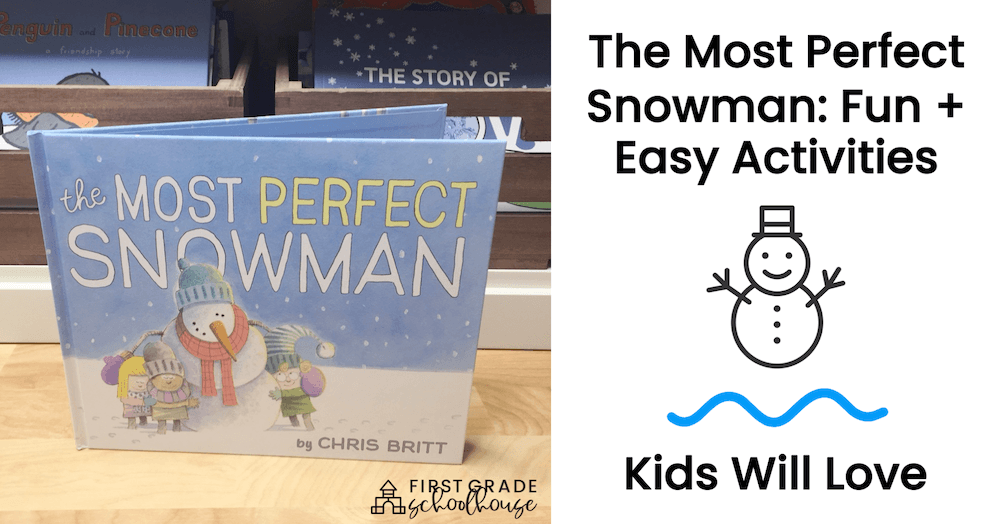
I planned units about snowmen and the winter season when we returned from winter break. The students left for break before winter started. So, snowmen and winter were the perfect topics to engage my first graders on the first weeks back from winter break in January.
I normally anchored a unit of study with a well-known or popular book. I instead searched for a new winter book that would lend itself to first grade reading skills and strategies. A book that could easily be used for review of social issues and suitable for partner and whole class discussions. I think I hit the jackpot!
The Most Perfect Snowman Read Aloud Book
The book I chose was The Most Perfect Snowman by Chris Britt, who is also the illustrator. I purchased the book shortly before winter break. After reading it for the first time, it immediately became my new best-loved snowman book.
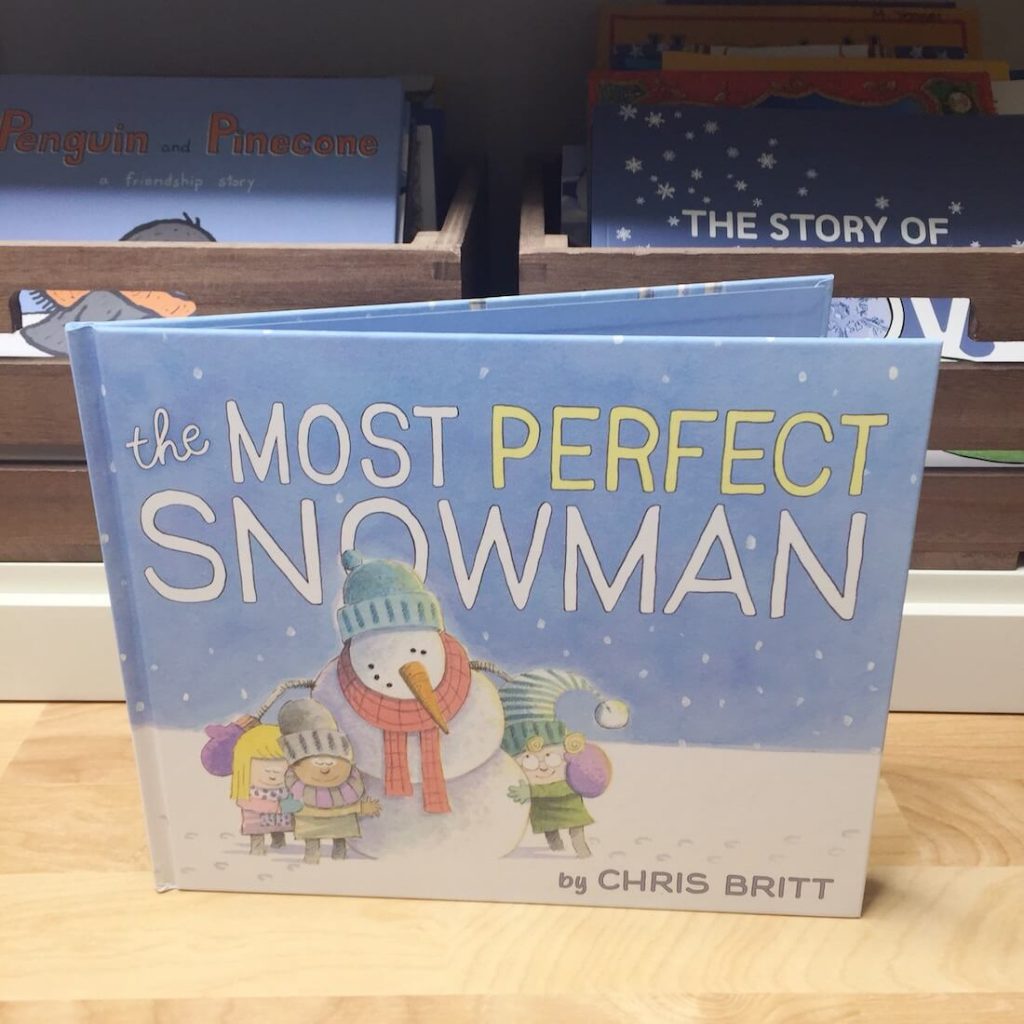
The sweet and simple story is about a snowman named Drift who was abandoned by some children before they finished building him. He was sad, because he was a plain-looking snowman and not fancy like the other snowmen. Drift dreamed of being the “perfect snowman.” He watched as the other snowmen played, danced, and had fashion parades. They did not include Drift in their fun. They ridiculed his looks and teased him.
Later, a group of children kindly gave Drift some of their clothing. He then happily played in the snow with them. Unfortunately, he lost most of his clothing in a blizzard one night.
Later, Drift paid forward the children’s kindnesses when he met up with a bunny who needed his help. In the end, Drift became the most perfect snowman.
We focused on the book themes of kindness, friendships, and generosity.
The Most Perfect Snowman Activities
1. Read Aloud and Sequencing
Lined up quietly on the carpet, wide-eyed children stared at the new snowman book on display. Students whispered predictions like: “I bet it’s about winter” and “I think the snowman might melt” and one even sighed, “I love new book day.”
I read the book for my first read aloud of the day on the Monday we got back from winter break. It was the springboard for a week of snowman activities that would include discussions, drawing, and writing to connect with the story.
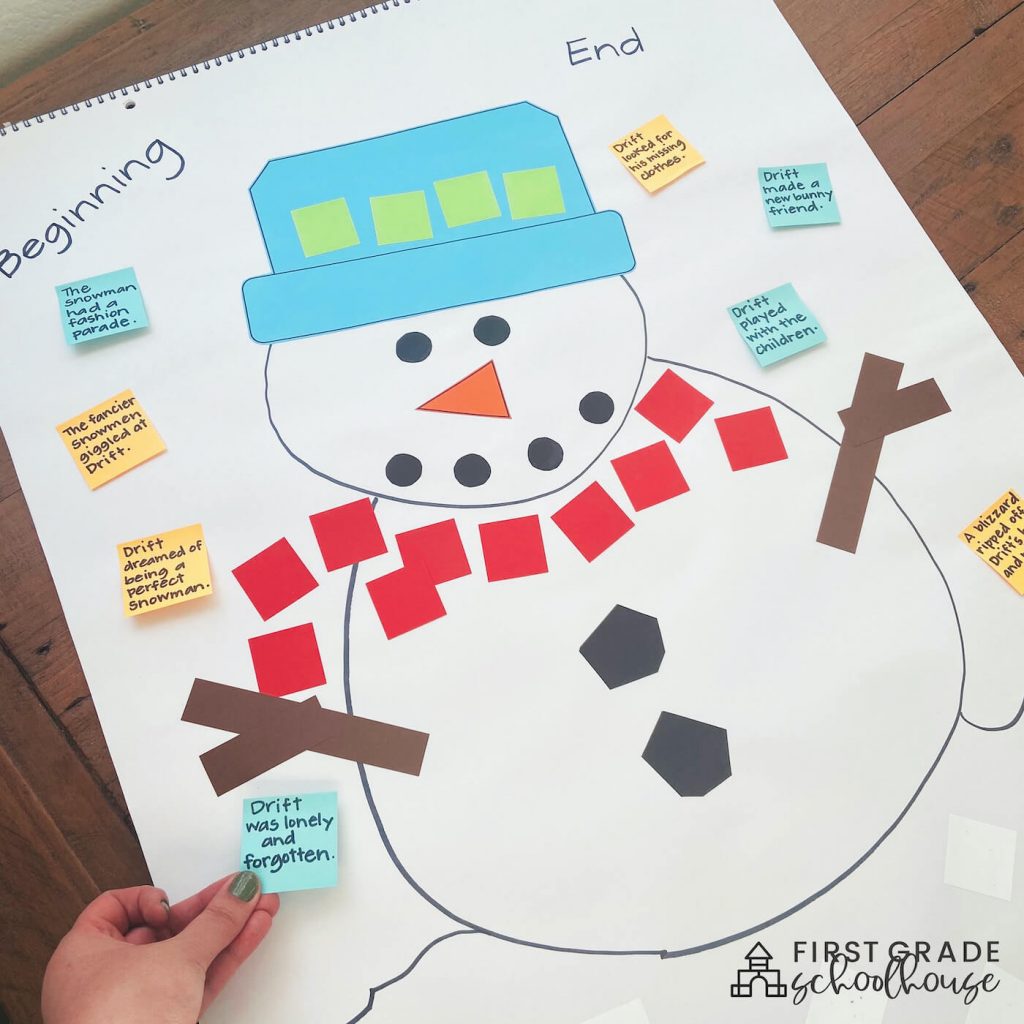
After reading the story, we used this sequencing chart to talk about the beginning and ending parts of the story. I wrote story events on sticky notes and prepared a snowman anchor chart. Here’s how I used the chart:
- First, I would read an event that was on a sticky note.
- Then, student partners discussed the timing of the event (beginning or end of the story).
- After, children shared their responses and a volunteer stuck the sticky note under the correct heading on the chart.
I posted the snowman anchor chart on a classroom wall for student reference. This was an effective way to scaffold the independent activities that the students would do later.
2. Descriptive Words
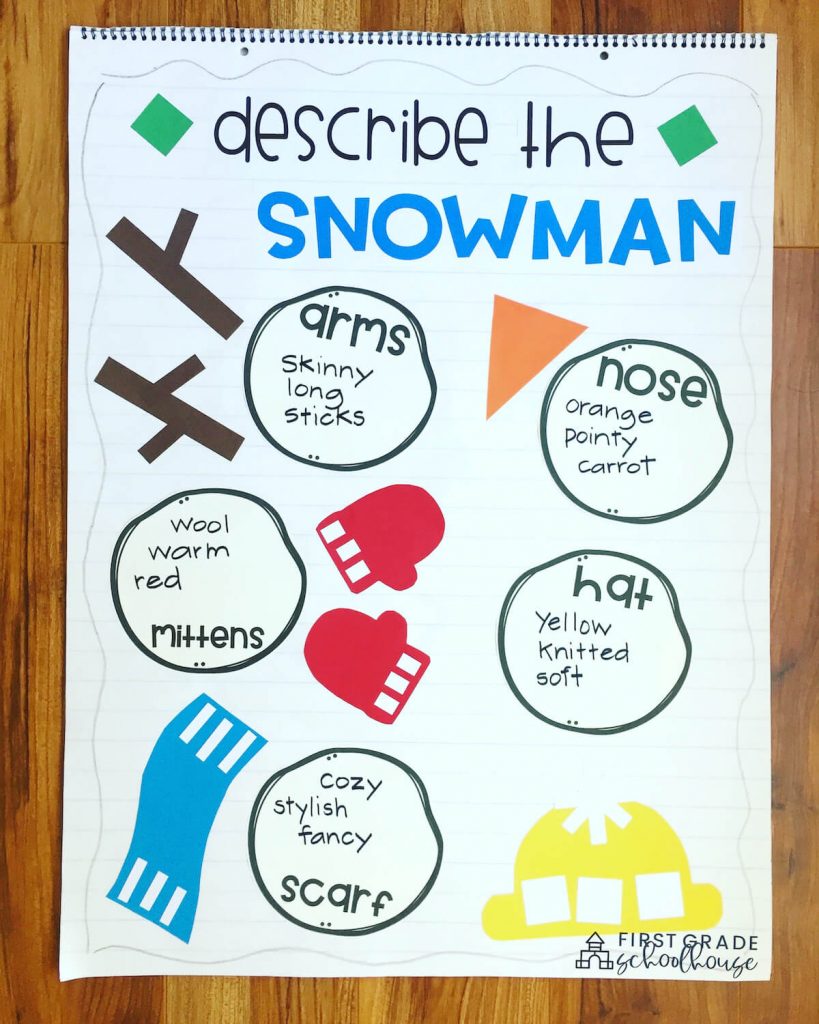
The author uses descriptive words to characterize the snowman’s clothes. For example, the snowmen in the story say that Drift has a “Snazzy outfit!” We used the chart to discuss the adjectives we found in the story. Students were able to add to the chart throughout the week. It was displayed in the classroom for students to use when they wrote about snowmen.
Students used the chart to help them complete the following activity independently or with a partner.
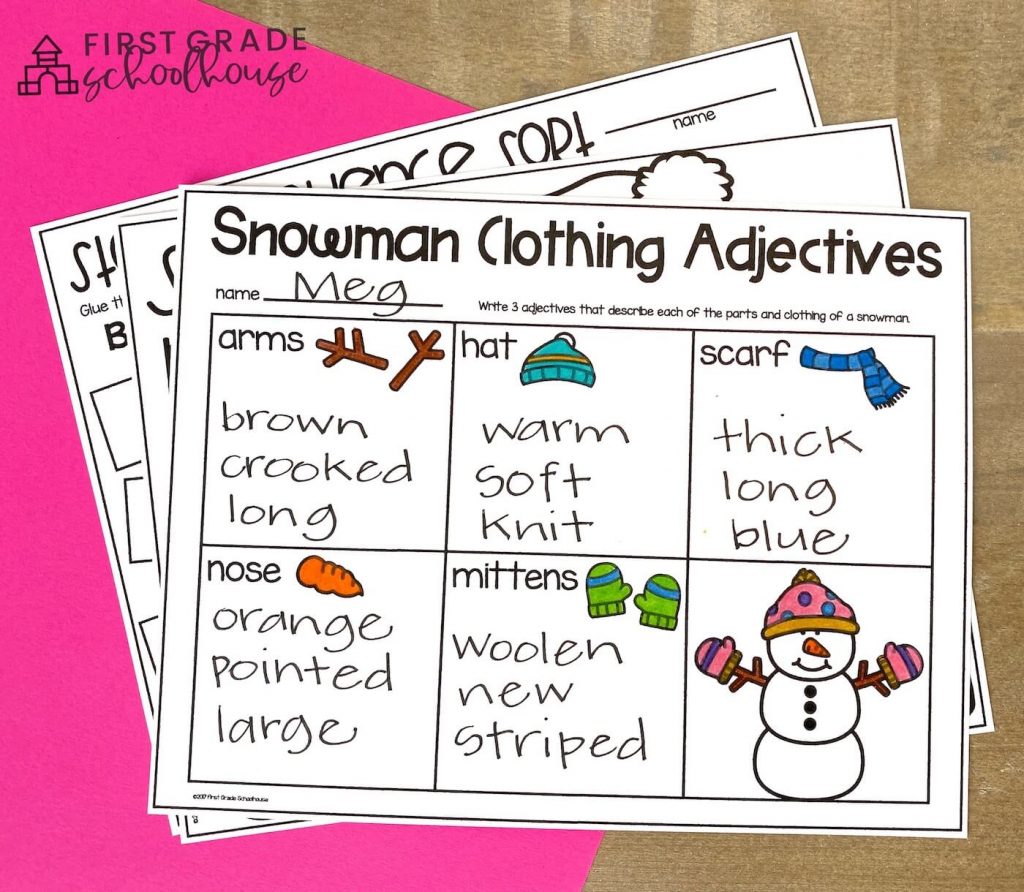
3. Kindness Activities
It’s easy to use this book as segue to kindness activities. Our school-wide Kindness Week was celebrated the week of Valentine’s Day in February. Kindness was a focus in our class leading up to that week. The students brainstormed ideas for ways to help others. We added them to the chart throughout the week.
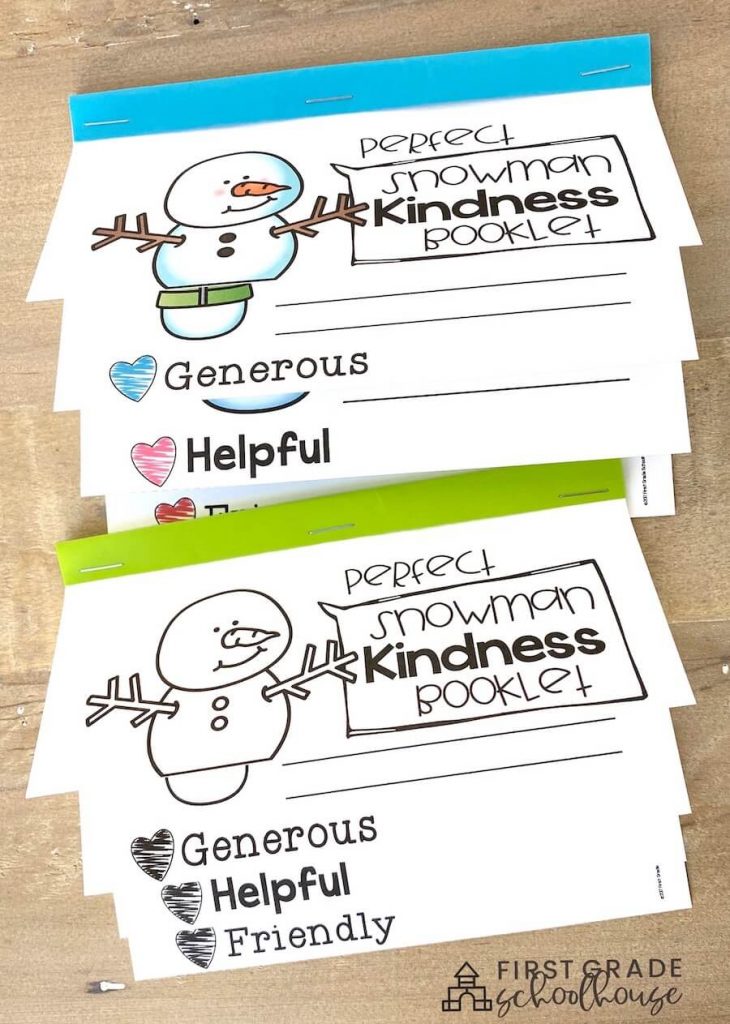
The class discussed kindness: give to others, help others, and be a friend. They brainstormed ideas as I modeled with the colored version of the booklet. The students completed the black and white version of the booklet as an independent activity.
4. Inclusiveness
We worked on inclusiveness. Do not exclude others. We talked about how exclusion feels and referenced details in the book. For example, Drift is alone and his head hangs down. The students shared how exclusion feels to them.
This “Ways We Can Help Others” anchor chart reminded the class of ways that they could reach out and help others. We revisited this topic throughout the school year.
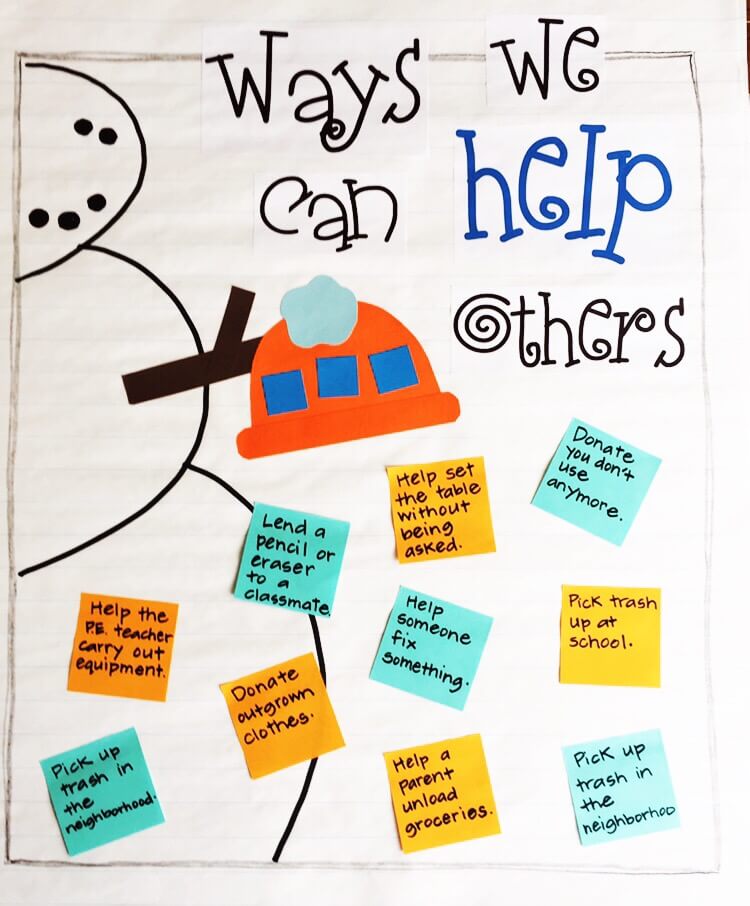
5. Snowman Mats
To integrate art related to our topic, I created snowman mats. The children made their own “fancy snowmen” with modeling clay or dough and wrote about them.
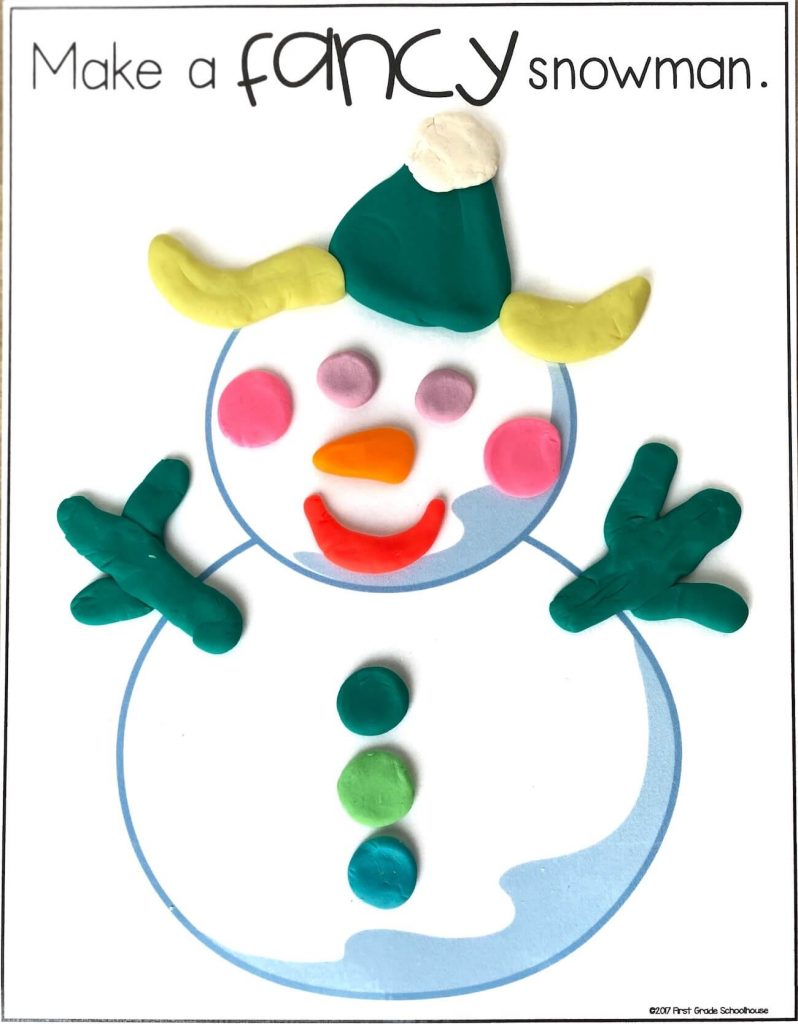
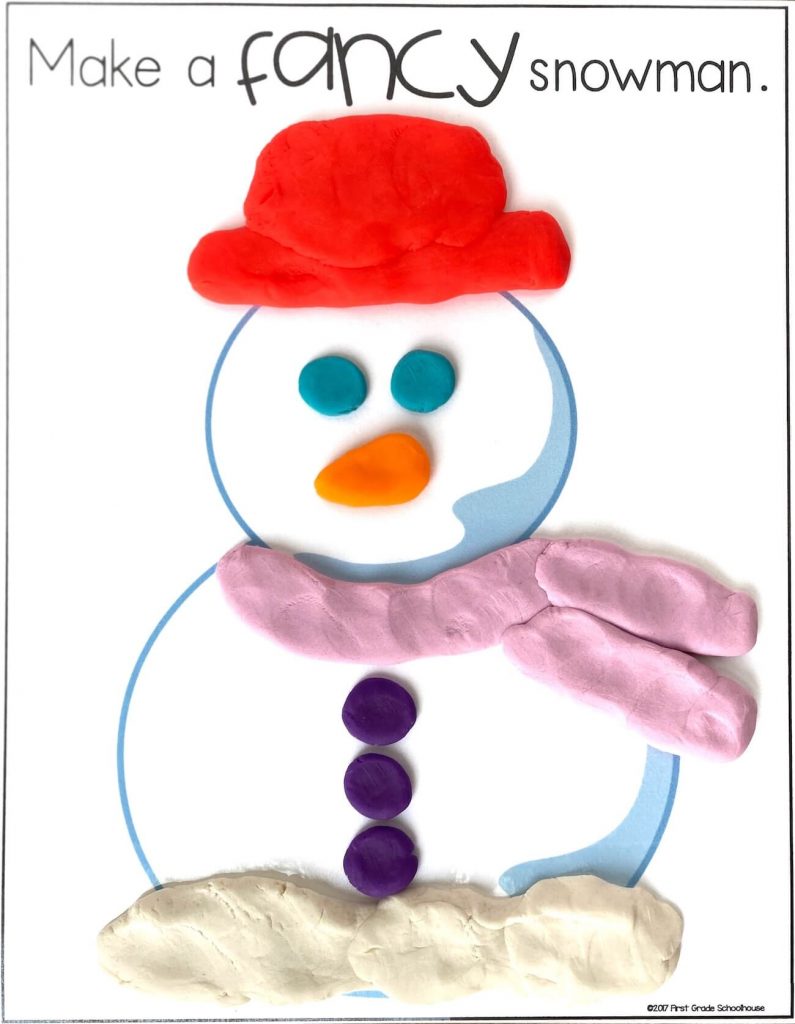
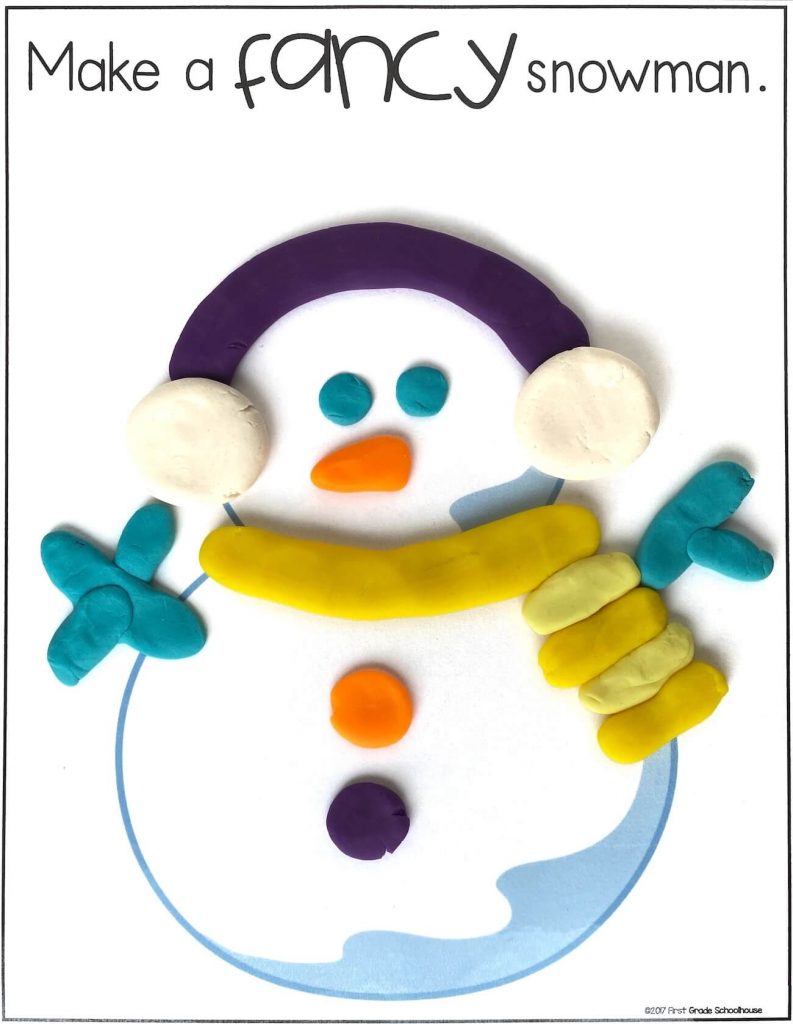
Join the First Grade Schoolhouse Club to download the snowman mats and accompanying writing printables for free!
If you’re interested in some of these activities and more that can be used with the The Most Perfect Snowman book, you can check them out by clicking on the picture below.
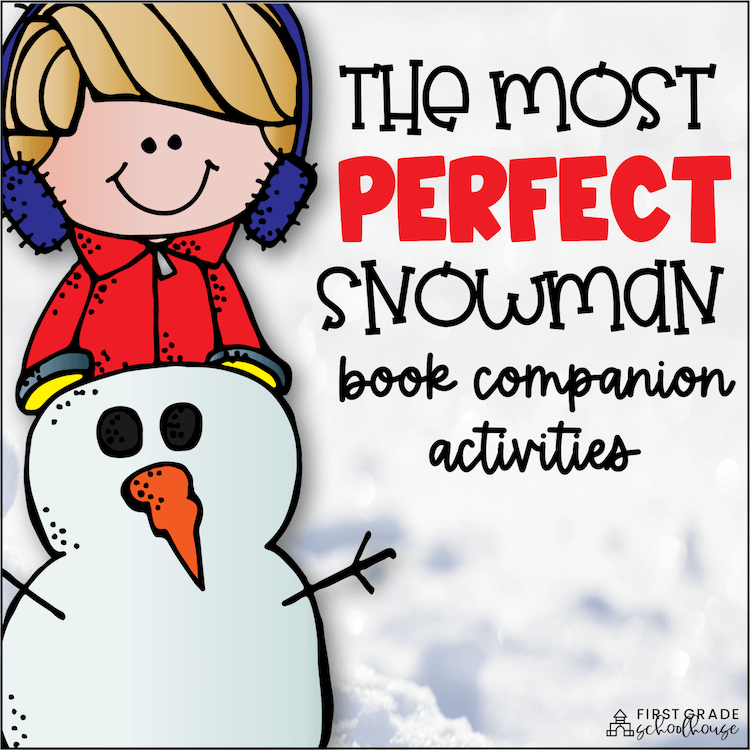
The snowman activities with our anchor book, The Most Perfect Snowman, definitely matched the students’ excitement during the week we returned from winter break.

Leave a Reply